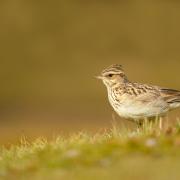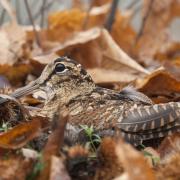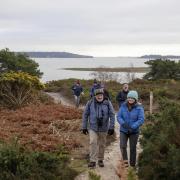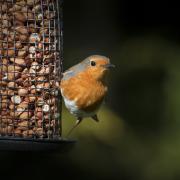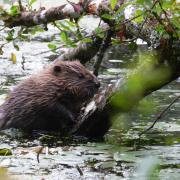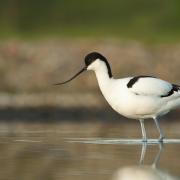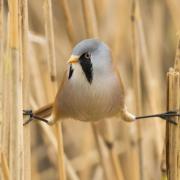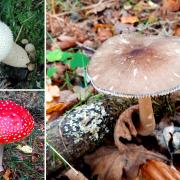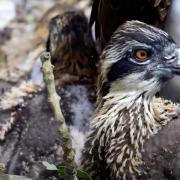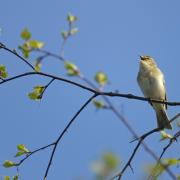From feeding a charm of goldfinches to providing a cosy home for a hedgehog, if you make your garden a winter haven for wildlife you will reap the benefits in the spring

There is plenty you can do to encourage wildlife into your garden whatever the weather. And making your garden wildlife friendly is even more important with the alarming decline of some species. The 2013 State of Nature report surveyed over 3,000 species and found that 60% have declined during the last 50 years. Those in decline include once familiar garden visitors such as hedgehogs and bumblebees.
By making a few changes you can make your garden a winter haven for birds, insects and mammals. One of the simplest things to do is to feed the birds. As Joy Wallis, community conservation officer at the Dorset Wildlife Trust (DWT) explains, offering a bird banquet with plenty of variety is the key to getting more species to visit your garden. “Some birds don’t eat seeds. Wrens are totally insectivorous so they really suffer in a persistent frost when there are no grubs and insects to be found. They need chopped-up mealworms and earthworms. Robins also don’t eat much seed and can’t access a hanging fat ball – they need their food spread out.” Water provided at various levels is also important. Place bird feeders and dishes either out in the open where the feasters can easily see cats coming or where there is a handy bush so they can dart to safety – some small birds such as tits need a perch close by and won’t use a food source that’s too exposed.
Ivy is a welcome food plant for many. “Ivy flowers late in November when the migrating moths are around, and any butterflies still around will always go for ivy,” says Joy. “Most bees will have gone into hibernation by October – other than the ivy bee, which we’re asking people to look out for. It feeds exclusively on ivy.”
Ivy bees are recent immigrants to Dorset; they were first spotted in Langton Matravers in 2001. “They spend the majority of their time as eggs, pupae and larvae, they might only fly for a day or two – but they need food for that period of time,” explains Joy. “Looking further ahead, ivy berries mature in February when there’s not much else around to eat.”
To encourage wildlife don’t be too keen to tidy up. “I always recommend not clearing out the bottoms of hedges where bumblebees and hedgehogs can hibernate,” she says. Greater stag beetles, found in Bournemouth and Poole, and lesser ones found all over Dorset, both need partly buried, untreated wood, so any rotting, part-buried logs in your garden should be left in situ.
Your compost heap is the perfect winter haven for hibernating bumblebees, mice, toads, newts or grass snakes so don’t turn it too enthusiastically. And if temperatures drop below freezing don’t break the ice on the pond. “If your pond freezes leave the ice on top; that way you get a natural temperature inversion, which means the bottom never freezes,” says Joy. “People often put tennis balls in their pond to try to stop ice forming but that only works if it’s windy – and ice can be beneficial. All the creepy-crawlies will be swimming around below it and the frogs will be happy in the mud at the bottom – there’s only a real problem if it freezes completely solid.”
If you’ve invested in a hedgehog house, a little work is needed to make it into a safe and cosy winter home. “It needs to be well insulated, buried in dead leaves or old carpet, and have plenty of dried leaves and straw in it,” advises Joy. “A lot of those sold just have an open doorway, but the entrance needs to be angled so cats can’t get in.”
Bee houses also need careful positioning. “Mining bees will stuff the canes with mud –there are eggs inside that will hatch in spring to eat the food that the bee has put in there, and some will be at chrysalid stage and come out as bees in spring,” says Joy. “Keep the bee house dry and away from predators – greater spotted woodpeckers will peck away the plugs and pull out the grubs, believe me I’ve seen them doing it! But don’t bring bee houses indoors or into a shed – the temperature will be wrong. Put them up in a lean-to or site them well up under an eave.”
Making your garden welcoming to wildlife in winter will pay dividends come the spring. Bees and other insects will pollinate flowers and vegetables, frogs and toads will help keep slugs at bay, birds also eat their share of pests. But perhaps more than anything else, there is the pleasure of sharing our outside spaces. Anyone who has heard a hedgehog snuffling on their patio, discovered a newt in their pond or simply enjoyed the friendly company of a robin as they dig their vegetable patch will know exactly why we should welcome wildlife into our Dorset gardens.
--------------------------------------------------
Read on
• Why lifting the neonicotinoid ban could be a disaster in the making• How the countryside and ecotherapy has helped depression and obesity• *VIDEO* Wryneck at Portland Bill








